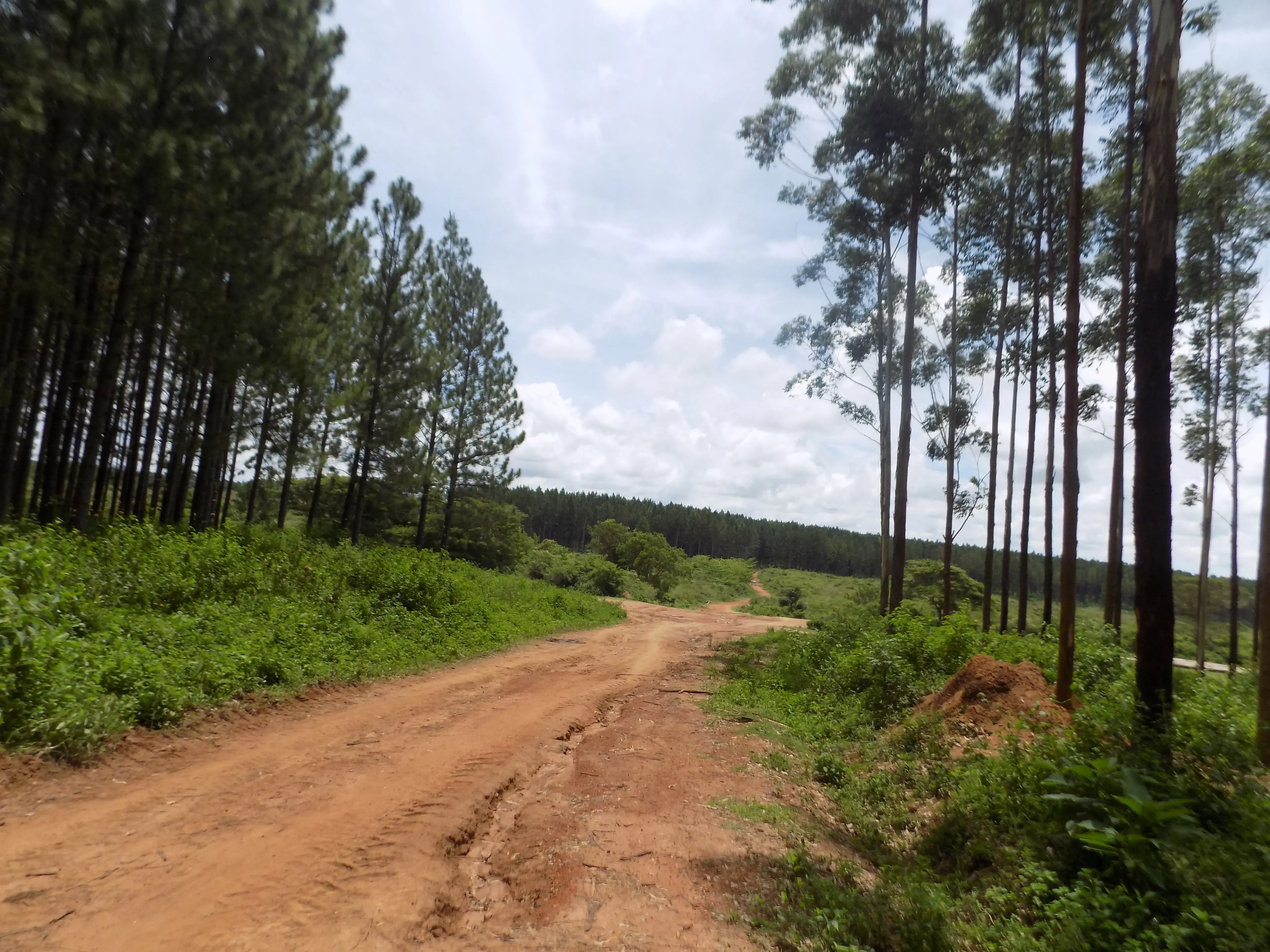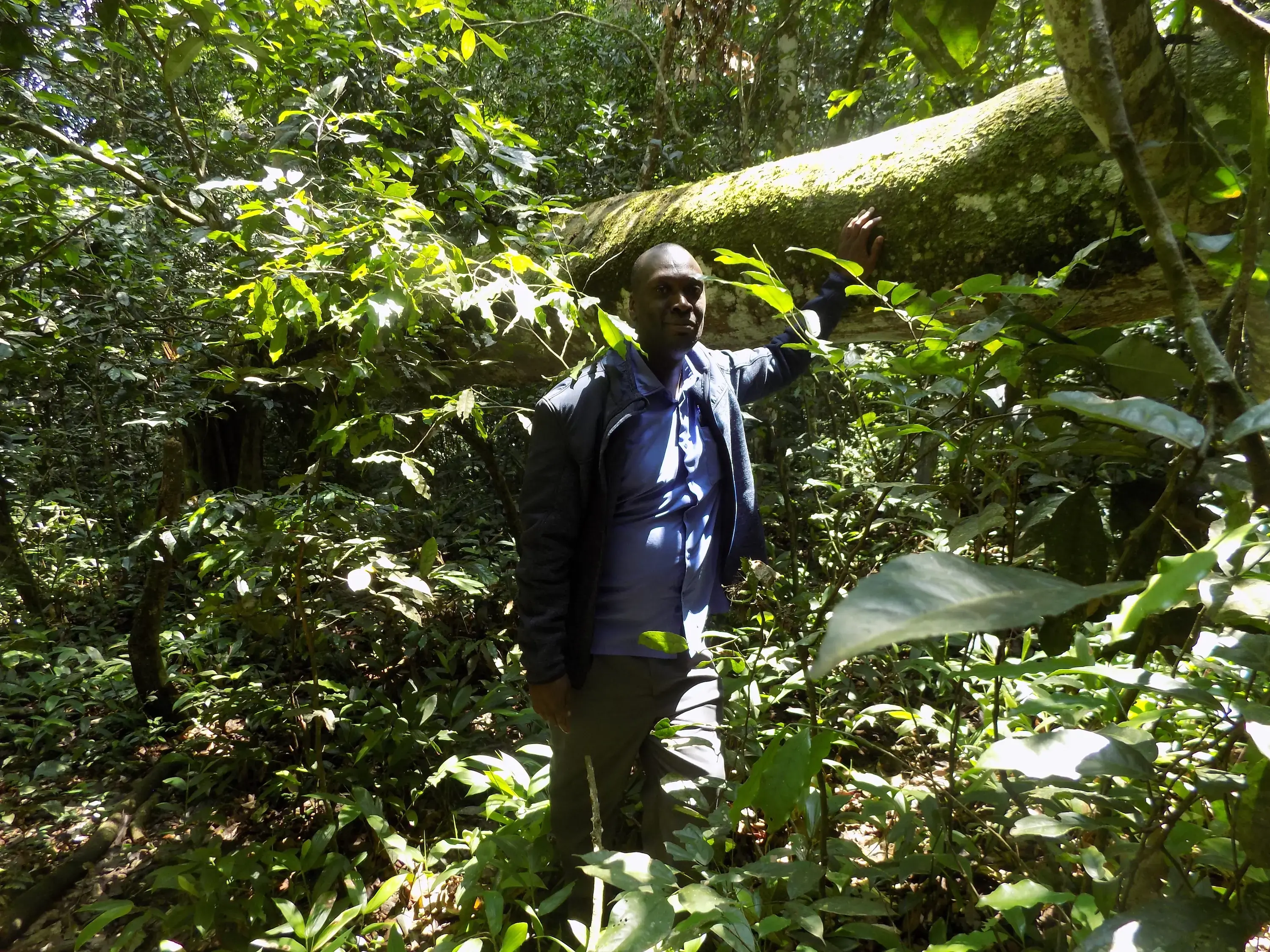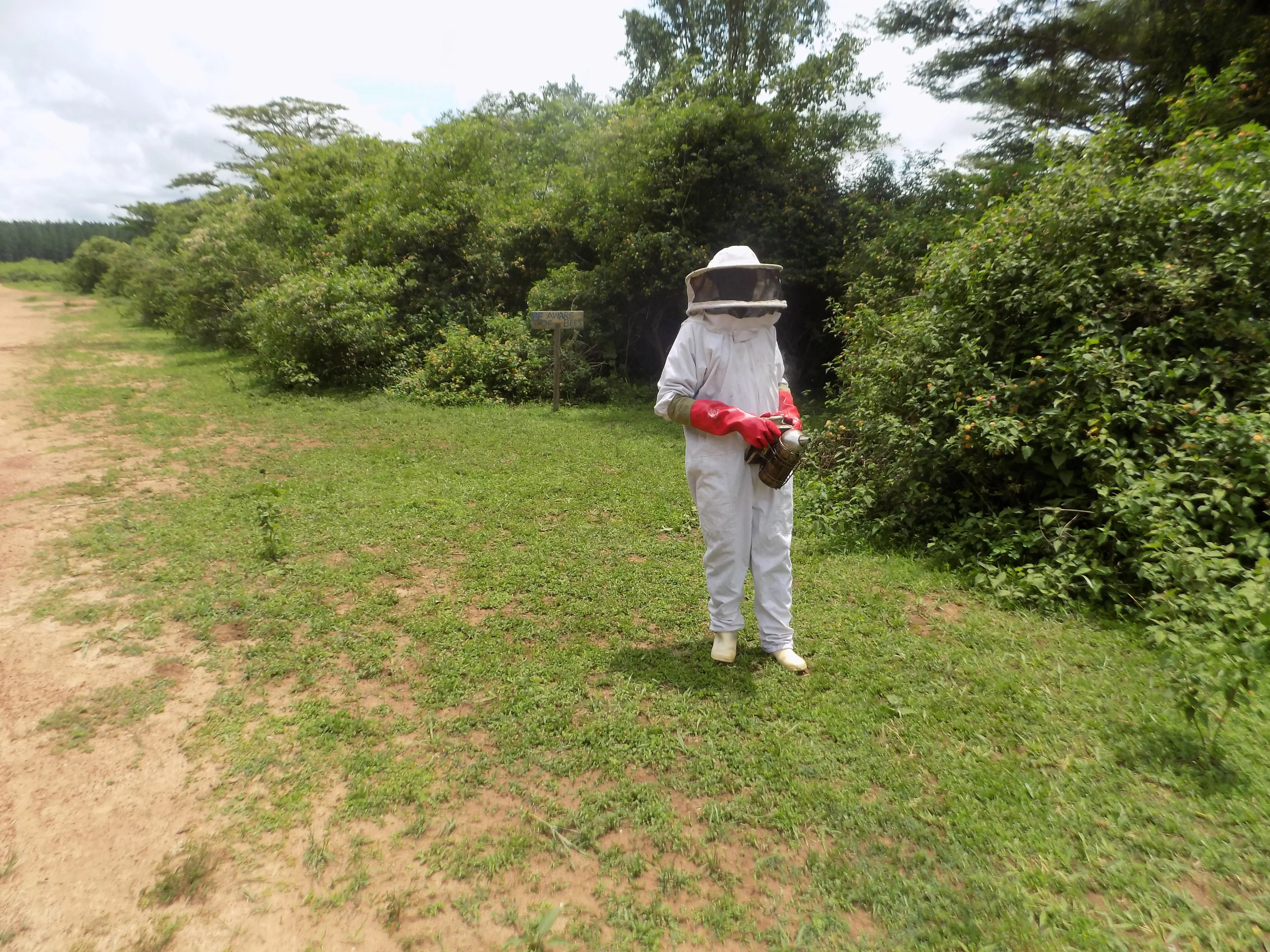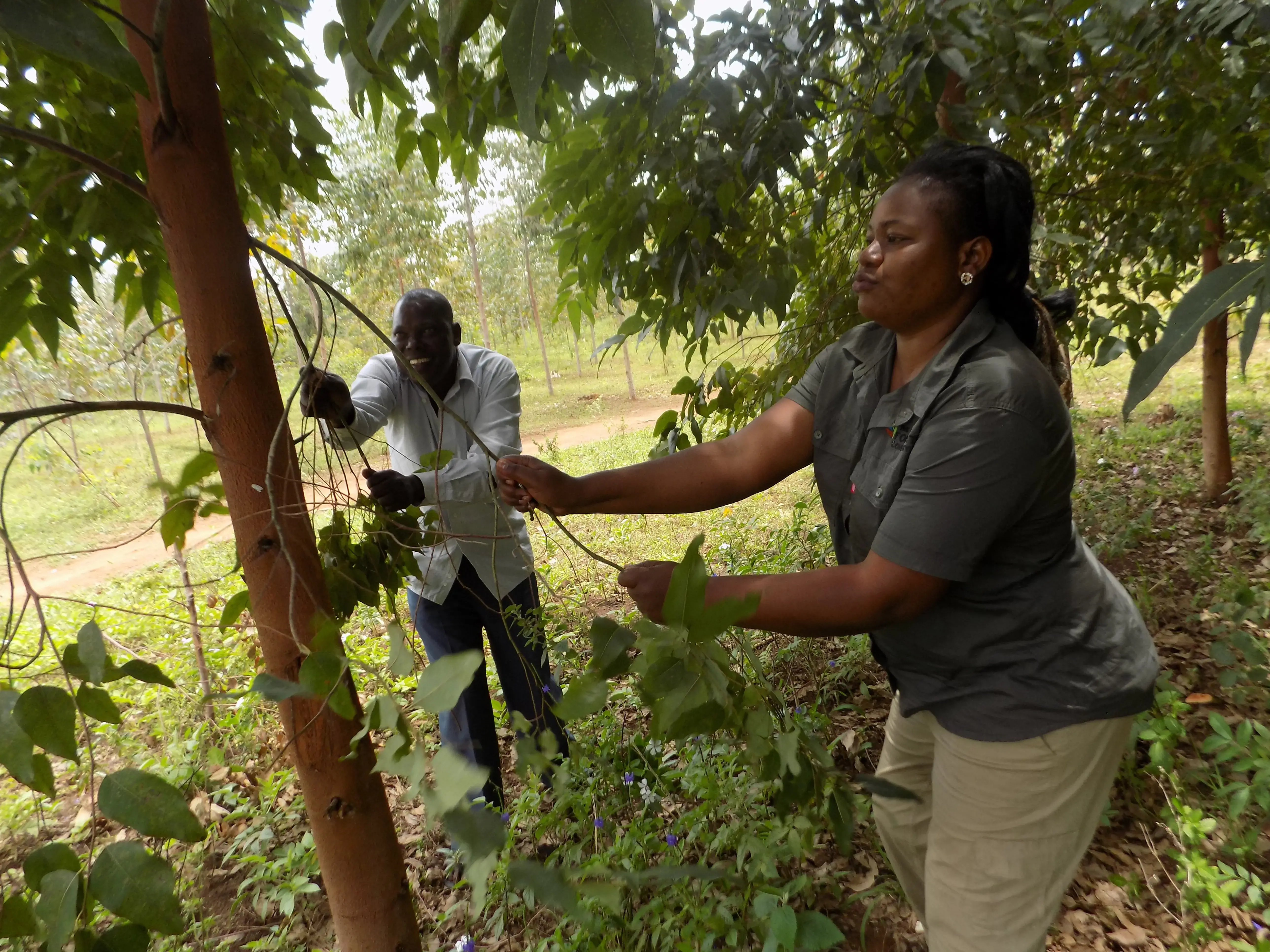
A forest auditing program, the Forest Stewardship Council (FSC) adopted by forest organizations is slowly picking up in the country.
Uganda Wildlife Authority is a member (210,000 ha); Uganda Timber Growers Association is in (80,000ha), as well as private planters like New Forests, and Busoga Forest Company.
There are 253,000 ha under FSC of the country 2.3 million ha according to Anne Agasha, the coordinator, FSC for East Africa. (Uganda, Kenya, Tanzania, Ethiopia, and Rwanda). Globally 200million ha are under certification. The top candidates being Canada, the United States and much of Europe.
The voluntary program started in 1993 after the 1992 Rio Sustainable Development Conference is meant to promote sustainable forest management practices.
As a nonprofit journalism organization, we depend on your support to fund journalism covering underreported issues around the world. Donate any amount today to become a Pulitzer Center Champion and receive exclusive benefits!

Forest products and services from such organizations are given a certificate of compliance by a certified auditor annually.
The forests are evaluated on their forest management, environmental, and social-economical community engagement.
Then, their products and services attract premium prices among green-conscious consumers in much of the developed world.
FSC runs on ten principles:
Member organizations work with established laws; adhere to conservation values; work on improving the economic and social well-being of their workers and local communities; and they also respect the rights of Indigenous people.
They establish a management plan that lists their economic, environmental, and social policies and objectives.
They manage their products and services in a way that maintains and improves their long-term economic viability, social and environmental benefits.
They conserve, maintain and restore the benefits of forests and mitigate negative environmental impacts
Other principles include showing cause that these principles are being followed and management must ensure all activities comply with all the principles.

Agasha says the certification is a mark that a product is sourced from a forest that is managed responsibly.
“The number on the product tag or invoice helps us track its origin,” she said in a phone interview.
She explains that certification works for both small and big planters. However, she advises small planters to work as a group just like the Uganda Timbers Growers Association (UTGA).
“Certification saves forest,” she says.
Peter Mulondo, the resources manager at UTGA, a 650+ member of large and small planters, explains that certification gives them both opportunity on the international timbers market and funding for expansion.
“It is a requirement to trade internationally. It is popular all around the world,” he said. “Investors also like investing in forests that are certified.”
For the small planters, it helps in entering the international system and having monitoring and reporting systems in place.
Bashir Hangi, the communications manager at UWA, who has forests—among them Kibale National Park, says the certification is a symbol to the international tourists community of sustainable forest management.
New Forests, a company with plantations across the country and a member of UTGA, says it joined FSC for two main reasons.
First, to access and earn premium prices for its products internationally,
Secondly and importantly, they are into forestry for the long term and want a good co-existence with nature and the community
“You don’t want to set up a forest and end up degrading the environment, and a community is against you,” said Alois Mabutho, Safety, Health, Environment, and Quality manager at New Forests. “We want to do forestry for the long term and change people’s environments.”
Esnweri Mukwaya, the plantation manager, Kirinya says 78% of the land is with forests while the remainder is for conservation.
“We fulfill both national and international good practices of forest management, including complying with National Forest Authority principles,” he says.
For community engagement, the company has trained the locals in beekeeping and agro-forestry. Others are in aquaculture. The company also runs a health centre.

The locals I interacted with when I visited the plantation in March are in beekeeping.
Gemukumwinho Credit & Savings Farmers Group and the other three groups are a 530-member group with 74 beehives in one of the wetlands between plantations.
Bee hiving not only keeps the wetland intact, but it also enhances pollination around the wetland ecosystems. Wetlands are among the most threatened ecosystems in Uganda, and around the world.
John Owori, the manager of the hives, says they harvest between 30-50 litres of honey each harvest with the dry season providing the best harvest. This they do three times a year. Members also operate their bee hives at their homes.
Owori has 11 bee hives at his home. He says they chose apiculture over aquaculture as the initial investment capital in the former is lower than in the latter.
They sell the honey under the brand name, Kirinya Bee Master in supermarkets. The money is in a SACCO which is lent to members at an interest rate of 2%.
Another income-generating activity, local communities have invested in is agro-forestry

Joseph Okumu, of Nsavu, Mayuge is in eucalyptus trees growing. He joined the program in 2013 and the current trees are his second lot. He harvested the first one in 2020, where he sold 700 trees to a Jinja-based businessman.
New Forests provides the locals with seedlings that are fast growing. They also train them in agro-forestry agronomy including bush clearing, pitting spacing, and spraying. He was also trained in apiculture.
Alex Kyabawampi, the manager, of corporate social responsibility, at New Forests says locals chose which economic activities they want to be supported as long as the activities conserve the environment.
Tanzania scholar Severin Kusonyolo Kalonga and others in their 2017 study published in Policy and Economics, “Does forest certification enhance livelihoods conditions? Empirical evidence from forest management in Kilwa district, Tanzania," found that livelihoods were better in areas under FSC than those without it.
Stuart Maniraguha, director of plantations development at National Forest Authority, says FSC certification brings benefits of international standards.
“It helps raise the conservation status of the area,” he said.
And indeed, plantations have helped the authority increase the forest cover which has declined to up 9% in 2015 from 22% in 1990. It has since risen to up to 12%.
Plantations are considered a conservation game changer and are being promoted by conservation organizations like FAO for woodlots arguing that among other benefits they reduce pressure on the traditional natural forests.
Joining
Mulondo says one applies to FSC and is given a list of auditors to choose from. UTGA has been working with the Soil Association (U.K) and they paid U.K. Pounds 49,000 (25 million shillings) for this year’s certification. The auditor then issues a certification or a rejection with reasons. A certificate is valid for five years.
Otherwise, membership to UTGA for small planters is UGX 100,000, and another annually 100,000. The big plantations pay an annual of UGX 2 million.
Challenges
Okumu says some seedlings don’t germinate. Owori of the beehives says their annual Forest for Prosperity money payments take time to arrive. This is a payment awarded based on the performance of the SACCOs.
Joan Asiimwe, the community development officer at New Forests, says farmers are aware that not all seedlings germinate.
“At times we give them more seedlings, but they can also be bought from our nursery,” she says. She adds that some payments are not yet effected as they are linked to some programs like the carbon certification program.
“We are still waiting for the money,” she said. “They will be paid.”
There are also challenges in having FSC scaled up.
Agasha says some people, especially in the Global South, look at certification as the business of the rich Europeans and Americans. There are also challenges for customers, especially in the emerging rich Asian countries who are not interested in certification, leading to more unsustainable tree harvesting hence deforestation.
Way forward
Patrick Byakagaba, a lecturer of natural resource governance in the department of forestry at Makerere University, advocates for the adoption of FSC principles and guidelines in Uganda as it prioritize sustainability and community economic empowerment.
“We have engaged the Finance Ministry, advising them to procure government timber products that adhere to FSC standards," he said as a member of the FSC National Forest Stewardship Standard of Uganda.
Kalonga’s study recommended the incorporation of FSC forest management certification in national policy as a tool for better forest management as it is most likely to improve the livelihoods of forest neighboring communities.
Better livelihoods are good for conservation. Like collaborative forest management, FSC is another tool that would save Uganda’s environment.
Forests as well as wetlands conserved under FSC are important regulators of the ecosystem. Forests not only store carbon, but they are also habitats for many species including bees. Wetlands store water and regulate the flow, especially after flooding.






